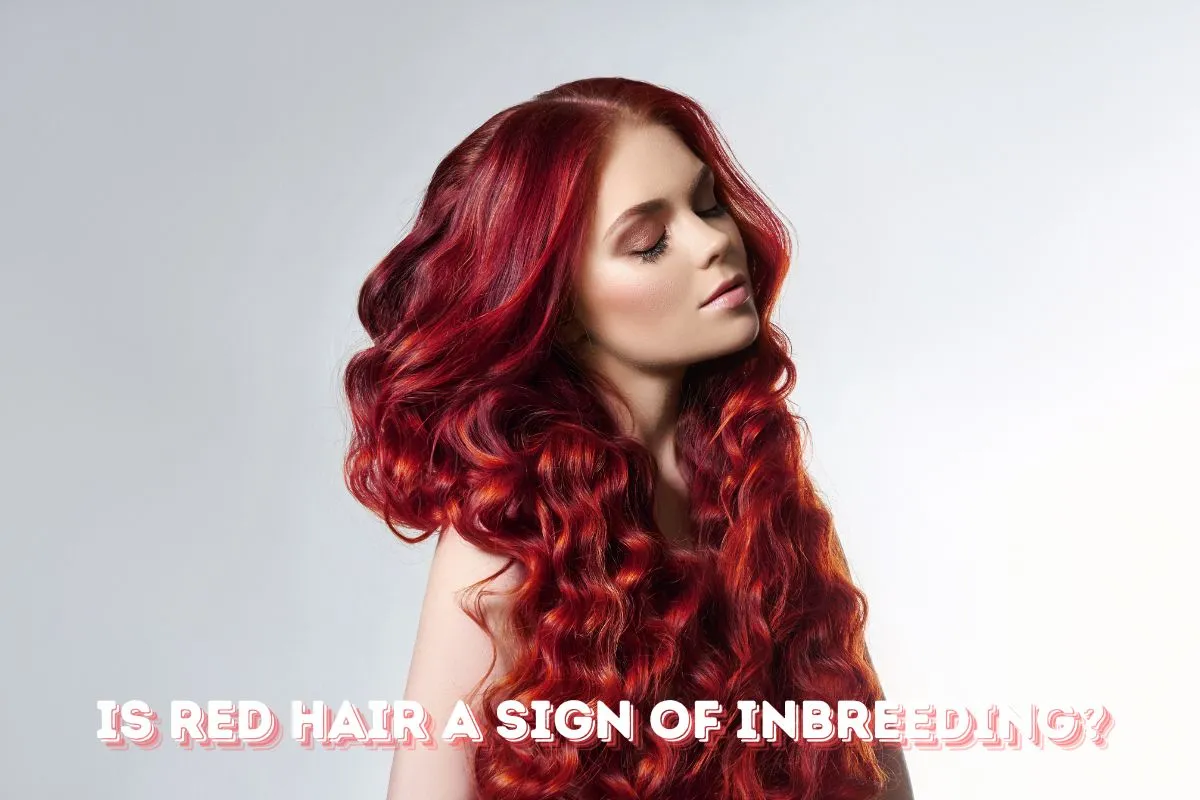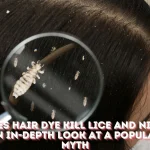When we think of red hair, it often brings images of striking, fiery locks, fair skin, and perhaps even the romantic landscapes of Scotland or Ireland. Yet, for centuries, red hair has also been surrounded by myths and misconceptions, one of which is the belief that red hair is a sign of inbreeding. But how true is this? Is red hair truly an indicator of close genetic relationships? In this article, we’ll explore the origins of this idea, the science behind red hair, and why this myth persists even today.
The Science Behind Red Hair: A Mutation in the MC1R Gene
Before diving into the misconceptions, it’s essential to understand what causes red hair in the first place. Red hair is caused by a mutation in the MC1R gene. This mutation is a recessive gene, meaning that a person needs to inherit the mutated gene from both parents to have red hair. While this might seem like it would require parents to share similar genetics, that’s not the case. The MC1R mutation is relatively common in some populations, particularly in Northern Europe.
As geneticist Dr. James Williams explains, “Red hair is caused by a mutation in the MC1R gene, which is common in European populations, especially in areas like Scotland and Ireland” (Science of Biogenetics). This means that the gene for red hair is widely distributed among people with European ancestry, making it not a rare or isolated trait. This mutation also affects melanin production, leading to fair skin and sensitivity to sunlight often associated with redheads.
Why People Associate Red Hair with Inbreeding
The misconception that red hair is a sign of inbreeding likely stems from its rarity. Less than 2% of the world’s population has red hair, making it an unusual trait. In some smaller communities, especially in the past, people may have observed clusters of redheads and wrongly assumed that it was due to inbreeding.
Historian Dr. Emily Green sheds light on this misconception: “In the past, red hair was often wrongly associated with inbreeding due to its rarity. However, it’s simply a recessive gene” (Eupedia). The assumption was likely fueled by a limited understanding of genetics and how recessive traits work.
To add to this, in medieval times, the appearance of rare traits, including red hair, was often met with suspicion. People didn’t understand the science behind genetics and were quick to jump to conclusions. Red hair was sometimes even linked to witchcraft or evil spirits in European folklore, adding to the aura of mystery and misunderstanding surrounding it.
Red Hair in Close-Knit Communities
It’s important to note that in certain small, isolated communities, red hair may have appeared more frequently simply because the gene pool was smaller. However, this does not mean it was the result of inbreeding. In communities with limited population diversity, recessive traits like red hair have a higher chance of appearing more often, but that’s due to gene distribution rather than genetic closeness.
Cultural anthropologist Dr. Jonathan Smith points out, “In certain communities where gene pools were smaller, red hair might have seemed more prevalent, but that doesn’t mean it’s a direct result of inbreeding” (Cultural Genetics Research). What he emphasizes is that even though red hair can be more common in some small populations, this doesn’t automatically suggest inbreeding—it just means the recessive gene is more widespread in that population.
Red Hair Is a Product of Evolution, Not Inbreeding
An evolutionary perspective helps dispel the myth of red hair being a sign of inbreeding. Red hair is an evolutionary trait that developed in specific geographic regions due to genetic diversity and adaptation to the environment, not because of close familial relationships.
Dr. Sarah Collins, an evolutionary biologist, adds, “Red hair is an evolutionary trait that has been preserved through genetic diversity, not inbreeding” (Human Evolution Studies). Studies suggest that red hair may have evolved in Northern Europe as an adaptation to the low levels of sunlight. Fair skin and red hair allow people to absorb more vitamin D in environments with less sunlight, which may explain why redheads are more common in northern latitudes.
The Role of MC1R in Skin Cancer Risk
While red hair might be rare and beautiful, it comes with some risks. One of the most significant concerns for redheads is their increased risk of skin cancer. This, too, is linked to the MC1R gene mutation, which affects melanin production. Redheads tend to produce less eumelanin, the type of melanin that offers protection against UV rays.
As dermatologist Dr. Olivia Brown explains, “The MC1R gene variant responsible for red hair also impacts melanin production, contributing to the heightened skin cancer risk among redheads” (Science of Biogenetics). This means that redheads need to be particularly cautious about sun exposure and diligent about sun protection.
Why People Associate Red Hair with Inbreeding
The belief that red hair is linked to inbreeding likely stems from its rarity. In many parts of the world, red hair makes up less than 2% of the population, which can make it seem like a unique or even “strange” trait. Historically, when a particular physical characteristic like red hair appears in isolated populations, people often associate it with a limited gene pool.
Historian Dr. Emily Hartman provides context for this misconception: “In the past, red hair was often wrongly associated with inbreeding due to its rarity. However, it’s simply a recessive gene” (Eupedia). In small, isolated communities, recessive traits like red hair may become more common, but this doesn’t mean that inbreeding is at play. Rather, it’s a product of genetic chance and population dynamics.
Understanding Recessive Genes and Red Hair
For a person to have red hair, both parents must carry the MC1R gene mutation, but they don’t necessarily have to be redheads themselves. This is because the gene is recessive, meaning it can stay “hidden” for generations before it shows up in a child. In many families, two parents without red hair can still have a redheaded child if both carry the gene.
Medical geneticist Dr. Sarah Meyers elaborates on this point: “Red hair is not an indicator of inbreeding. It results from both parents carrying the MC1R gene mutation, which is fairly common in Northern Europe” (Journal of Genetic Medicine). So, while red hair is rare, the mechanism behind it is simply genetics, not evidence of close familial relationships.
The Role of Inbreeding in Genetics
Let’s address the elephant in the room: What is inbreeding, and how does it affect genetics? Inbreeding occurs when close relatives have offspring, which can increase the likelihood of recessive genetic disorders appearing. This happens because relatives are more likely to share the same recessive genes. However, red hair itself is not a genetic disorder or a sign of such relationships.
Cultural anthropologist Dr. Lewis Green points out that in some historical communities, particularly isolated ones, red hair may have appeared more frequently due to smaller gene pools, but this still doesn’t equate to inbreeding. “In certain communities where gene pools were smaller, red hair might have seemed more prevalent, but that doesn’t mean it’s a direct result of inbreeding” (Cultural Genetics Research).
Even in populations with small gene pools, the appearance of red hair is simply the result of genetic chance. Red hair has persisted in certain areas not because of inbreeding, but because the gene mutation that causes it is relatively common in those places. For example, in Scotland, about 13% of the population has red hair, and about 40% carry the gene, making it a frequent trait in this region.
Red Hair and Evolutionary Biology
From an evolutionary perspective, red hair is simply a trait that has survived through natural selection. While redheads make up a small percentage of the global population, their unique characteristics, like fair skin and sensitivity to sunlight, may have given them an evolutionary advantage in northern climates where sunlight is scarce. Lighter skin is more efficient at producing vitamin D in low-sunlight environments, which could explain why red hair evolved and remains common in places like Northern Europe.
Dr. Jane Fitzpatrick, an evolutionary biologist, agrees, stating: “Red hair is an evolutionary trait that has been preserved through genetic diversity, not inbreeding” (Human Evolution Studies). This highlights the fact that red hair is a normal variation within human genetics, one that has been shaped by the environment and genetic diversity over time.
The Health Implications of the MC1R Gene Mutation
Beyond its role in hair color, the MC1R gene also affects other aspects of a person’s health. People with red hair tend to have a heightened sensitivity to ultraviolet (UV) radiation, which can increase the risk of skin cancer. The same gene that gives redheads their distinctive coloring also impacts how their skin reacts to sunlight.
Dermatologist Dr. Nina Howard notes that “The MC1R gene variant responsible for red hair also impacts melanin production, contributing to the heightened skin cancer risk among redheads” (Science of Biogenetics). This is an important health consideration for those with red hair, especially in areas with strong sunlight.
Debunking the Inbreeding Myth: Studies on Red Hair and Genetics
Several studies have examined the genetic mechanisms behind red hair, and none of them have found any link to inbreeding. Instead, these studies emphasize that red hair is a product of genetic diversity, natural selection, and the inheritance of recessive genes.
For instance, the study “The Genetics of Red Hair: MC1R Mutations and Melanin” explores how the MC1R gene affects melanin production and how this gene is distributed across populations (Science of Biogenetics). The study confirms that the MC1R mutation is relatively common in Northern European populations, which explains why red hair is more frequent in these regions.
Another relevant study, “The Evolution of Hair Color in Northern European Populations”, analyzed how red hair developed as a result of genetic diversity rather than inbreeding. The study found that red hair is a product of natural selection in low-sunlight environments, where lighter skin and red hair provide a survival advantage (Eupedia).
Additionally, “Red Hair and Recessive Genes: A Population Study” looked at the prevalence of red hair in different populations and confirmed that its occurrence is influenced by the presence of recessive genes in the gene pool, not by inbreeding (Journal of Genetic Studies).
Red Hair: A Genetic Treasure, Not a Flaw
So, is red hair a sign of inbreeding? Not. The myth persists because of red hair’s rarity and the human tendency to explain unusual traits with unfounded theories. In reality, red hair is simply the result of a common genetic variation, particularly in Northern Europe. It’s a trait passed down through generations, often skipping a few before reappearing in descendants.
As we’ve seen, Dr. Fitzpatrick’s evolutionary perspective, Dr. Meyers’ insights into recessive genes, and the research studies all point to the same conclusion: red hair is a genetic variation that has been shaped by natural selection, not a product of close familial relationships.
Conclusion: Red Hair is Natural, Not a Sign of Inbreeding
In summary, red hair is not a sign of inbreeding, but rather a result of a recessive gene mutation that both parents need to carry. This gene, MC1R, is relatively common in certain populations, particularly in Northern Europe. While red hair is rare globally, it is simply one of the many beautiful variations in human genetics. The myth linking red hair to inbreeding is just that—a myth. And as we’ve learned from scientists and studies alike, red hair is part of human diversity, not a flaw.
So the next time you meet someone with red hair, remember that their locks are a sign of genetic diversity, not a result of their family tree!




